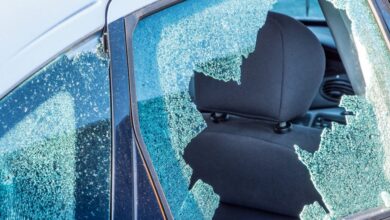Tips for Choosing Durable 4WD Awnings Online That Last in Any Weather

The exponential growth of e-commerce has revolutionized how outdoor equipment is purchased, with specialized off-road accessories now readily available through digital marketplaces. Recent market analysis indicates that 78% of adventure vehicle modifications are now researched online before purchase, with shelter systems representing the third most significant investment after suspension and recovery equipment. Selecting durable 4WD awnings online requires understanding specific technical parameters that distinguish professional-grade equipment from inferior alternatives. Industry testing demonstrates that properly selected awnings can withstand over 200 deployment cycles and exposure to temperatures ranging from -20°C to 70°C without significant degradation—essential knowledge for adventurers planning extended journeys through variable climate zones.
Decoding Technical Specifications
When evaluating online listings, focus on quantitative specifications rather than subjective marketing terminology. Professional-grade awnings specify precise fabric density measurements (320-420GSM), material composition percentages (typically 35/65 polycotton blends for premium models), and standardized waterproofing ratings (2000mm+ hydrostatic head resistance). Engineering-focused manufacturers provide comprehensive technical documentation including wind resistance ratings (25-40km/h depending on design) and temperature tolerance ranges.
Legitimate performance claims reference standardized testing protocols such as AATCC 127 for water penetration resistance or ASTM D4533 for tear strength. Online retailers providing these detailed specifications demonstrate technical literacy and product confidence compared to those using vague descriptors like “heavy-duty” or “all-weather” without supporting data.
Assessing Hardware Components Remotely
Quality awning hardware components can be evaluated through detailed product photography and specification sheets. Premium tensioning systems utilize anodized aluminum components (6061-T6 grade) with precision-machined fittings rather than cast components. Mounting brackets should feature multiple adjustment points with load distribution capabilities exceeding 120kg dynamic load rating.
Hinge mechanisms represent critical failure points in inferior products. Verify listings specify stainless steel hinges (preferably 304-grade) with self-lubricating nylon bushings rather than painted mild steel alternatives that corrode rapidly in coastal environments. Telescoping support poles should feature internal locking mechanisms with minimum 1.2mm wall thickness to prevent bending under moderate wind loading.
Identifying Superior Weatherproofing Features
Advanced weather resistance incorporates multiple protective elements beyond basic waterproofing. Premium awnings utilize specialized fabric treatments combining UV stabilizers, anti-fungal compounds, and water-repellent finishes that maintain effectiveness through 150+ washing cycles. Verify these treatments are chemically bonded at the fiber level rather than superficially applied, as surface treatments typically deteriorate after 12-18 months of environmental exposure.
Seam construction significantly impacts long-term weatherproofing. Superior designs utilize double-folded seams with marine-grade thread offering 10kg+ tensile strength. Technical listings will specify precise seam allowances (typically 12-15mm) and stitch density (8-10 stitches per inch) that indicate attention to engineering detail rather than aesthetic considerations.
Evaluating Deployment Engineering
Advanced deployment mechanisms dramatically impact field usability. Modern designs incorporate gas-assisted struts, precision-balanced pivot points, and self-tensioning systems that maintain optimal fabric tension as temperatures fluctuate throughout the day. Premium products achieve 80-120 second deployment times with single-operator functionality compared to 3-5 minutes for conventional designs requiring multiple operators.
Examine product videos demonstrating actual deployment sequences rather than edited marketing presentations. Professional manufacturers provide detailed deployment specifications including required clearance dimensions, ergonomic reach distances, and operation force requirements—typically under 5kg of force for any single operation—ensuring usability across diverse user demographics.
Understanding Warranty Structure and Support
Comprehensive warranty coverage reflects manufacturer confidence. Industry-leading warranties provide 5+ years structural coverage and 2-3 years fabric protection with specific provisions for UV degradation rates. Legitimate warranties outline clear environmental exclusion parameters rather than vague “misuse” terminology that potentially invalidates coverage under normal operating conditions.
Verify spare parts availability through the online retailer’s system. Professional suppliers maintain 10+ year component inventories with standardized part numbering systems facilitating accurate replacement ordering without requiring original documentation. This infrastructure indicates commitment to long-term product support beyond initial sales objectives.




